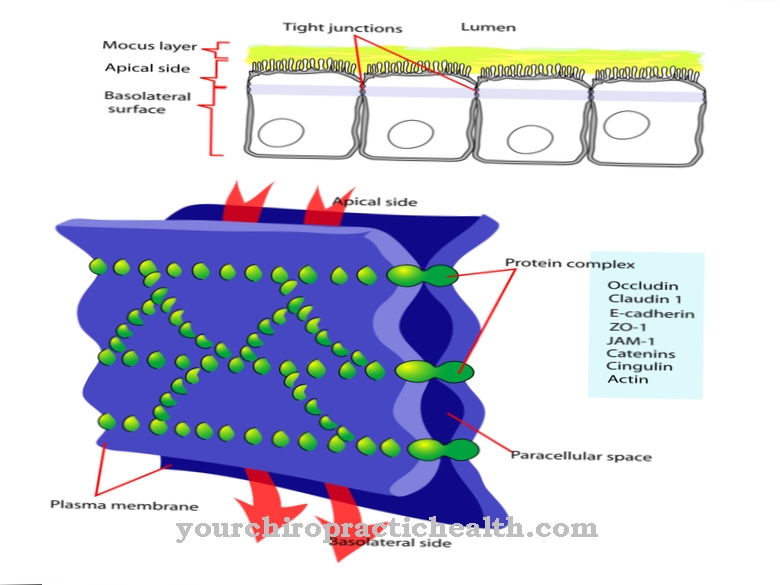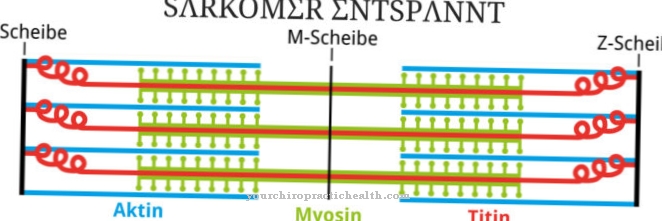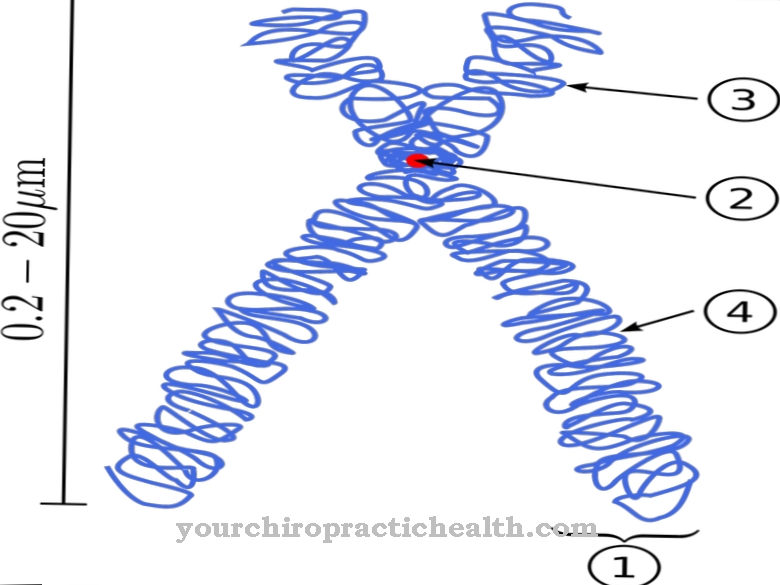Of the Intestines is a large and important organ of the digestive tract. In interaction with the stomach, it digestes and absorbs nutrients as well as storing and excreting food residues. In addition, the intestine plays an important role in the immune system.
What is the intestine?

Of the Intestines is an elongated hollow organ of the gastrointestinal tract. It extends from the stomach gate (pylorus) to the anus (anus). Its total length is approx. 8 m.
The intestine is divided into several sections according to functional and anatomical aspects: After passage through the stomach, the food first reaches the small intestine, consisting of the duodenum, the jejunum and the ileum.
The ileum is connected to the large intestine, consisting of the "real" appendix (caecum) with the appendix vermiformis (appendix vermiformis; colloquially "appendix"), the colon (colon) and the rectum.
Anatomy & structure
Of the Intestines is essentially a muscular tube lined with mucous membrane. Its wall structure consists of three layers: Inside there is a mucous membrane, the shape of which varies considerably in the individual sections of the intestine.
The middle layer is the tunica muscularis, which in turn is composed of an inner circular muscle and an outer longitudinal muscle layer. The intestine is closed to the outside by a membranous tunica serosa or a connective tissue tunica adventitia. The intestinal mucosa has a considerable increase in surface area in the small intestine:
It is not only wrinkled, but also turned into a total of around 4 million intestinal villi. These intestinal villi are also covered by a brush border made of microvilli. In this way, the intestinal mucous membrane reaches a total surface of approx. 500 square meters.
Functions & tasks
The different sections of the Intestines perform different tasks. The small intestine is mainly responsible for the absorption of nutrients. Before absorption, the nutrients must be enzymatically broken down in the small intestine:
The lining cells of the intestinal mucous membrane themselves have the right enzymes for carbohydrates. For protein and fat digestion, the small intestine needs the support of the pancreas and the gallbladder, the secretions of which flow into the duodenum. Salts, vitamins and water are also absorbed in the small intestine. The intestinal villi are well supplied with blood so that the nutrients obtained can be transported away with the blood. In the large intestine, mostly only minerals and water are absorbed.
The rectum ultimately stores the feces until the next time it is emptied. Beyond the absorption of nutrients, the intestine is of great importance for the immune system: The intestinal flora not only has a physiological bacterial colonization, but is also confronted with innumerable pathogens every day through food. The intestine thus fulfills an important barrier and protective function. For the immune defense, lymphocytes are distributed diffusely or in associations as lymph follicles over the entire intestine. They are summarized as GALT ("well associated lymphoid tissue").
Overall, around 75% of all antibody-producing cells are in the intestine. The muscular layer of the intestine enables intestinal peristalsis, which is crucial for chopping up and propelling food. Intestinal peristalsis and glandular secretion are regulated by the giant intestinal nervous system (enteric nervous system, or ENS for short). The ENS is part of the autonomic nervous system, has about 4 times more nerve cells than the spinal cord and is nicknamed the "abdominal brain".
Diseases
Among the most common Bowel disease include intestinal infections that typically manifest themselves as diarrhea, vomiting, gas or abdominal pain. If an infection affects the appendix, surgical removal may be necessary. If certain enzymes in the intestine are defective or insufficiently available, food intolerances occur, e.g. B. the widespread lactose intolerance.
Unrecognized, these intolerances can cause irritable bowel syndrome just like bacterial colonization. Chronic inflammatory bowel diseases are Crohn's disease and ulcerative colitis. Colon cancer is the second most common malignant tumor disease in Germany. Almost 90% of all colon cancer cases are adenocarcinomas of the colon that arise from glands.
Polyps - benign growths that can degenerate into malignant tumors are considered to be the preliminary stage of colon cancer. Intestinal infarctions are also particularly dangerous, as they are often recognized too late and intestinal tissue quickly dies. Overall, there are a number of other intestinal disorders. The first symptoms of bowel disease are usually changes in the stool and / or pain.
Typical & common diseases
- Crohn's disease (chronic bowel inflammation)
- Inflammation of the intestine (enteritis)
- Intestinal polyps
- Intestinal colic
- Diverticulum in the intestine (diverticulosis)



























